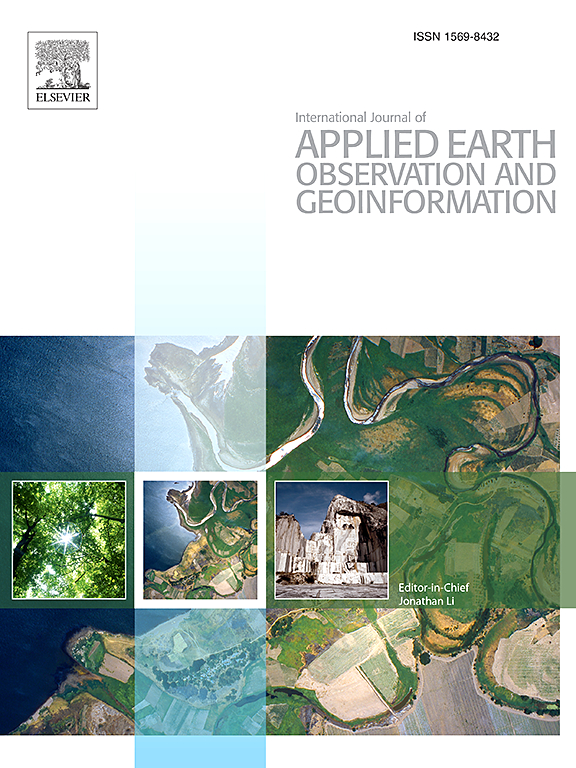Identification of standing dead trees in Robinia pseudoacacia plantations across China’s Loess Plateau using multiple deep learning models
IF 7.6
Q1 REMOTE SENSING
International journal of applied earth observation and geoinformation : ITC journal
Pub Date : 2025-02-01
DOI:10.1016/j.jag.2025.104388
引用次数: 0
Abstract
Drought-induced tree mortality has increasingly expanded worldwide under the influence of climate warming, with China’s Loess Plateau (CLP) emerging as a critical hotspot for such impacts. As one of the most active tree-planting regions globally, the CLP primarily aims to achieve soil and water conservation despite facing challenges such as limited rainfall and frequent extreme drought events. However, accurate identification of standing dead trees (SDTs) within plantations using remote sensing techniques remains underexplored, and the spatial distribution patterns of SDTs across the CLP are poorly understood. Therefore, this study leveraged unmanned aerial vehicle (UAV) remote sensing to capture high-resolution RGB images of Robinia pseudoacacia plantations. These images were then integrated with a comprehensive evaluation of multiple detection algorithms, including Faster R-CNN, EfficientDet, YOLOv4, YOLOv5, YOLOv8, YOLOv9, and a novel model, YOLOv9-ECA. Particularly, the YOLOv9-ECA was developed by incorporating the ECA module into key network layers to enhance channel dependency modeling and improve feature representation for SDTs detection. Its merit lies in adaptively reweighting feature channels, enabling efficient detection in resource-constrained environments. As expected, the YOLOv9-ECA model demonstrated significant advancements, achieving a detection speed of 123.5f/s, a mAP of 97.8%, and an F1 score of 0.97, outperforming other models in both detection efficiency and accuracy. Subsequently, the model was employed to quantify the spatial distribution of SDTs across the CLP by estimating the number of dead trees per unit area. Results revealed an increasing trend in the number of dead trees per unit along decreasing precipitation gradients, emphasizing the vulnerability of Robinia pseudoacacia plantations in drier regions. Additionally, the number of dead trees per unit varied with slope aspect, with sunny slopes exhibiting the highest values and shady slopes the lowest. This study highlights the potential of YOLOv9-ECA as a powerful tool for the efficient detection of SDTs, offering insights for the sustainable management of Robinia pseudoacacia plantations on the CLP and holding potential applicability to similar environments globally.
求助全文
约1分钟内获得全文
求助全文
来源期刊

International journal of applied earth observation and geoinformation : ITC journal
Global and Planetary Change, Management, Monitoring, Policy and Law, Earth-Surface Processes, Computers in Earth Sciences
CiteScore
12.00
自引率
0.00%
发文量
0
审稿时长
77 days
期刊介绍:
The International Journal of Applied Earth Observation and Geoinformation publishes original papers that utilize earth observation data for natural resource and environmental inventory and management. These data primarily originate from remote sensing platforms, including satellites and aircraft, supplemented by surface and subsurface measurements. Addressing natural resources such as forests, agricultural land, soils, and water, as well as environmental concerns like biodiversity, land degradation, and hazards, the journal explores conceptual and data-driven approaches. It covers geoinformation themes like capturing, databasing, visualization, interpretation, data quality, and spatial uncertainty.
 求助内容:
求助内容: 应助结果提醒方式:
应助结果提醒方式:


